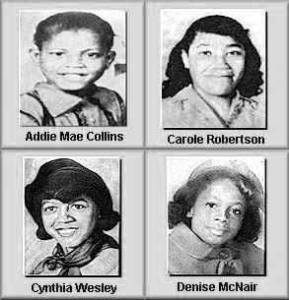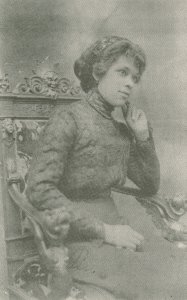Alice Walker’s 70th birthday was this past Sunday. Her writings only saved my life. I first got into her work when The Color Purple movie came out. This was right after my grandmother passed away. That movie was the only thing that pulled me out of that funk. “You took my sister Nettie ‘way from me. You knew she was the only somebody who loved me…” Whoa! Celie was speaking my grief. Ma ki da da.
Through the movie, I was introduced to the novel and, in essence, the world of African-American women’s literature. So um, this blog you’re reading right now? Thank you, Alice Walker.
I’ve kinda been in Ms. Walker’s presence at least 3 times in my life. The first was a book signing in Brooklyn for the Possessing The Secret of Joy release where they rushed us past her. (Boo!) Then she stayed in the guest rooms in my dorm during my freshwoman year at Spelman College, but we never saw her. We tried though. Like casually hanging out by the door to her hallway tried until some staff member ran us off. But those instances were teasers really. It’s the third encounter that matters.
I was finishing up my lunch at Whole Foods in midtown Atlanta. I look up and see Alice Walker walking toward the restroom. My first reaction was “WTF!” And my second reaction was “Oh, no!” You see, I had to go to the bathroom too. And there was no way that I was going to be one of those rude fans who slides pen and paper under the stall door while a celebrity was trying to handle their business. And I didn’t want to miss her if she left while I was handling mine. Besides, I already had her autograph (reference my Alice Walker encounter #1).
Well, I really had to go. So I went. And she washed her hands and left out before I was done. Oh no! Foiled by the elusive Ms. Walker again. I washed my hands and went back into the store. By now, I was gonna be late if I didn’t start heading back to work. But eff that. This woman’s work only had a major influence on the person I have become, right? So I look around. She was talking to her companion and was about to push her cart into the main part of the store.
I gently tapped her on the back. She turned and I… Well, what do you say to Alice Walker when you unexpectedly bump into her at the grocery store? I came up with pure brilliance in that split second, if I do say so myself.
“Excuse me, Ms. Walker. I don’t mean to bother you. I just wanted to say thank you.”
Alice Walker’s response was to open her arms and say “Give me a hug.” She wrapped her arms around me. And I turned into a babbling idiot. “Oh my god. I don’t want to bother you. Your writings mean so much to me. I started writing because of you. Blah blah blah…” And then I think I sobbed. Nooooo!
By then the dreadlocked stock girl was looking at us funny. Causing a scene was the last thing I wanted to do. I could easily the berries & juices folk mobbing this poor woman while she tried to do her grocery shopping. I quickly gained my composure and said my goodbyes. But when I stepped out into the parking lot? I. Started. To. (Gasp). Cry.
I was such a mess. I returned to the hair salon/spa where I was working – hella late – in a daze.
“What’s wrong with you, Kaia?”
“I just bumped into Alice Walker. She hugged me.”
“Who’s Alice Walker?” My co-workers were total buzzkills that day.
And that, my friends, is my “I Bumped Into Alice Walker at Whole Foods” story.
Happy Birthday, Ms. Walker. I’ll never stop saying thank you.
Now go read The Color Purple. Followed by The Temple of My Familiar and Possessing the Secret of Joy (in that order). And the essay “Looking For Zora.” That is all.
Note: The documentary “Alice Walker” Beauty in Truth” is currently showing as part of the PBS series “American Masters.” Check your local listings for broadcast times.
Heads Up, Writers
Carina Press editor Rhonda Helms said on Twitter this last week that she is “desperate” for PoC (people of color) historical romances, from 1850s on. She’ll look at any heat level from sweet to super spicy. So please finish writing your African-American historical romances and send them to her.
Gwen Hayes at the historical imprint Scandalous at Entangled Publishing is also look for PoC historical romances.
What I’m Reading Now
I’m still on my African-American educational history kick. I’m currently reading The Education of Blacks in the South, 1860-1935 by James D. Anderson. I’ll do a write up on it once I’m finished. But so far it’s been both an eye-opener and a pissed-me-offer.
Until next week,
Kaia







